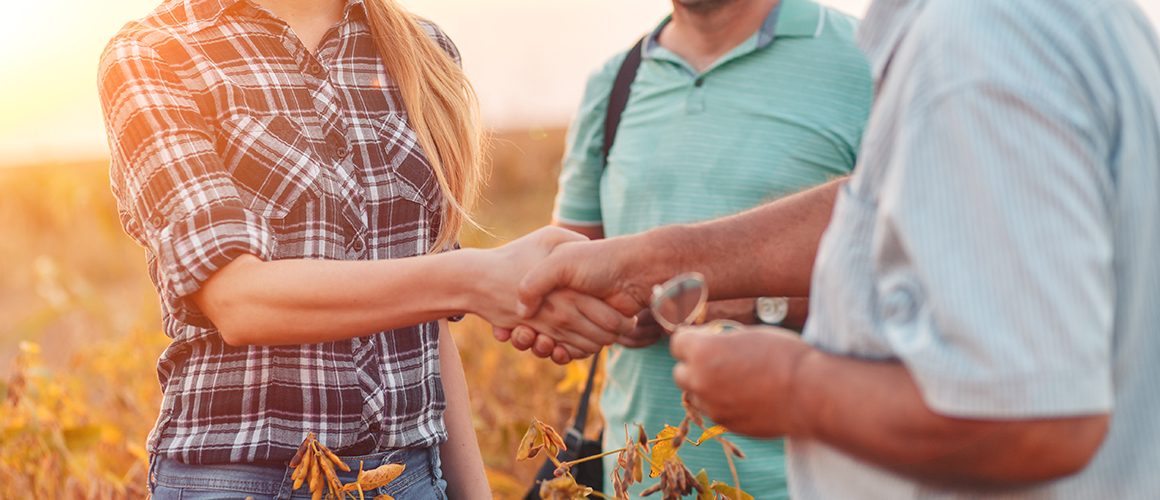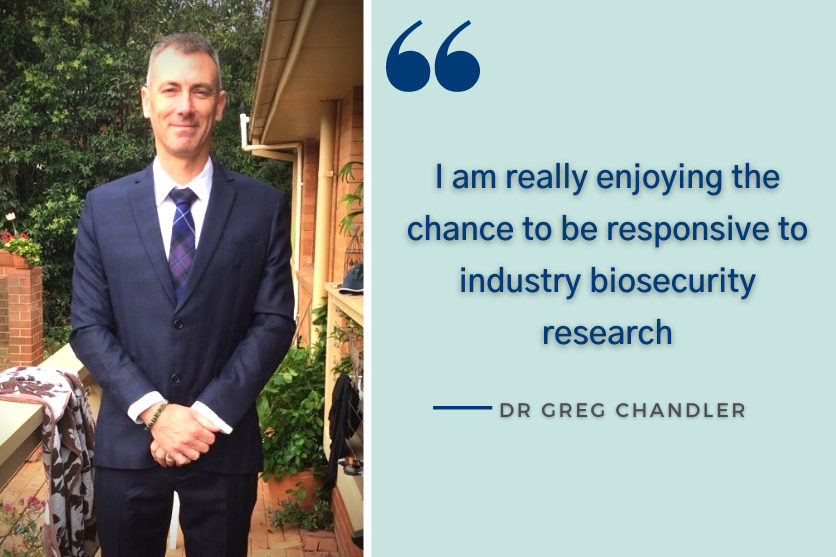
Opportunity for exporting growers – cultural business etiquette training course available
19 January 2021
IFAM horticulture industry briefing summary
27 January 2021Works at: Hort Innovation (R&D Manager)
Location: Sydney, New South Wales
Hi Greg, thank you for your time!
Firstly, can you please give us a brief overview of your role at Hort Innovation and what it involves?
I am the R&D Manager for Biosecurity here at Hort Innovation, which involves managing a large and diverse portfolio of investments. These include the development and updating of industry biosecurity plans; exotic pest and disease surveillance and diagnostics; fruit fly research; and examining ways to improve our post-entry quarantine procedures, so that industry has faster access to new germplasm without compromising our biosecurity protocols.
What are you working on at the moment?
The recent incursion of serpentine leafminer (Liriomyza huidobrensis), a major pest of many vegetable industries in particular, is very much a focus at the moment.
A project to assist industry respond and manage serpentine leafminer is currently in the pipeline for contracting early in 2021. We have a couple of projects on another pest that came into Australia recently, fall armyworm (Spodoptera frugiperda) also about to be contracted.
Our Strategic Industry Plans are being renewed at the moment – in time for the start of the 2021-22 financial year, which will be a major focus for the next few months while these are developed. These will help industry and Hort Innovation prioritise research areas for the next five years, including for the biosecurity portfolio.
Looking at your time as R&D Manager of the biosecurity portfolio, what other activities have you been involved in?
Aside from my day-to-day activities, I participate in several national committees, either as a standing member or by invitation. These allow me to share my biosecurity knowledge and experience with the broader horticultural and agricultural communities, as well as keep my finger on the pulse of research and development gaps for our industries.
For example, I was invited to the Consultative Committee on Emergency Plant Pests as a guest following the incursion of serpentine leafminer, meetings of which are in the strictest confidence. This allowed me to immediately engage the affected industries while maintaining confidentiality, which helped me to grasp the situation quickly and to develop research priorities for an urgent project that will assist growers in identifying and managing this serious pest – saving valuable time.
What’s on the agenda for the next 12 months in the biosecurity space?
During the next year, I would really like to push for more transformational biosecurity approaches for new projects to keep our biosecurity system resilient into the future. There are many questions that need engagement across the biosecurity spectrum, and this is a chance to engage in some blue-sky thinking. Questions to consider include:
- How do we discover the next serious pest or disease likely to infiltrate our biosecurity defences?
- Are these already on our list, or do we need intelligent horizon scanning to give us as much warning as possible?
- What tools need to be developed or modified for early detection?
- How do we prioritise industry research and development needs, so that we can position ourselves strategically to take advantage of future funding opportunities outside the levy system? This would really help to leverage industry levy funds and make them go further.
- How do industry R&D priorities align with government needs and responsibilities?
- How can we improve our industry-based pest and disease surveillance programs for better plant health and market access opportunities?
- What novel techniques and approaches should we be aiming to take advantage of in biosecurity research and development?
Tell us a little bit about yourself – how did you get to where you are today?
I came to biosecurity and horticulture through an unusual path. I am a botanist by trade, specialising in plant taxonomy (identifying and classifying plants).
I spent a number of years in the United States following the completion of my PhD, where I undertook a post-doctoral fellowship, followed by an assistant professor role at University of North Carolina Wilmington. After I decided that academia was not for me, I sought out more applied work and for a time, ran a small construction business most concentrating on historic house renovations and remodels.
I then took up a role with what is now Department of Agriculture, Water and the Environment (DAWE) in Darwin, Northern Territory, as a botanist with Northern Australia Quarantine Strategy (NAQS). This was my introduction to plant health surveillance and diagnostics, which I continued when I moved to Sydney and joined the science team at the border, managing the local National Border Surveillance team among other special projects.
My time at DAWE gave me an appreciation for the challenges faced across the biosecurity spectrum, and I carried this invaluable experience to Hort Innovation. I have been with Hort Innovation for almost a year now, and I am really enjoying the chance to be responsive to industry biosecurity research, the variety of the work, and the real collaboration that I see in the industry biosecurity space.
What do you enjoy most about your job and working in the horticulture industry?
The sheer diversity of horticulture is amazing, and there is never a dull moment – I am loving the sheer intensity of working with such a diverse array of industries!
There are so many biosecurity threats to horticulture and engaging with growers, industry bodies and government agencies is both challenging and rewarding. The passion of our growers is really obvious, and getting out and about to see the challenges and opportunities first-hand is fantastic.
Finally, where can we keep up to date with Hort innovation’s activities and how can our growers get in touch?
You can keep up to date on Hort Innovation activities by visiting our website, and you can follow Hort Innovation on social media, including LinkedIn, Facebook, Instagram and Twitter. Growers can get in touch with me directly by email and through LinkedIn – I am always happy to have a chat and discuss all things biosecurity and more!
From time-to-time, the Weekly Update features a member of the vegetable industry. Whether you are a grower, a researcher or work in the supply chain, this is a chance to showcase the different roles and areas within horticulture. If you – or someone you know – would like to be involved, please email Michelle De’Lisle at michelle.delisle@ausveg.com.au.



